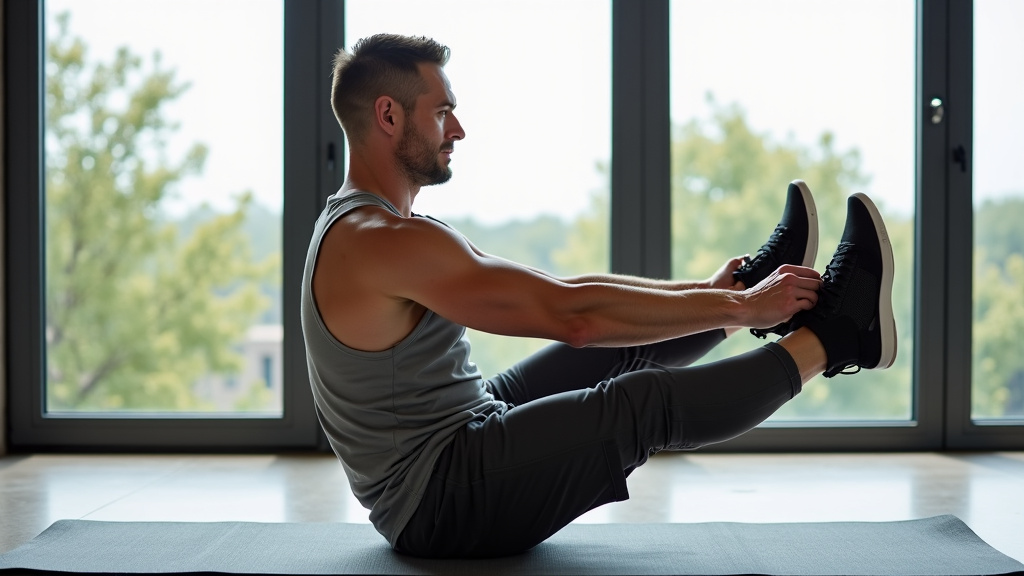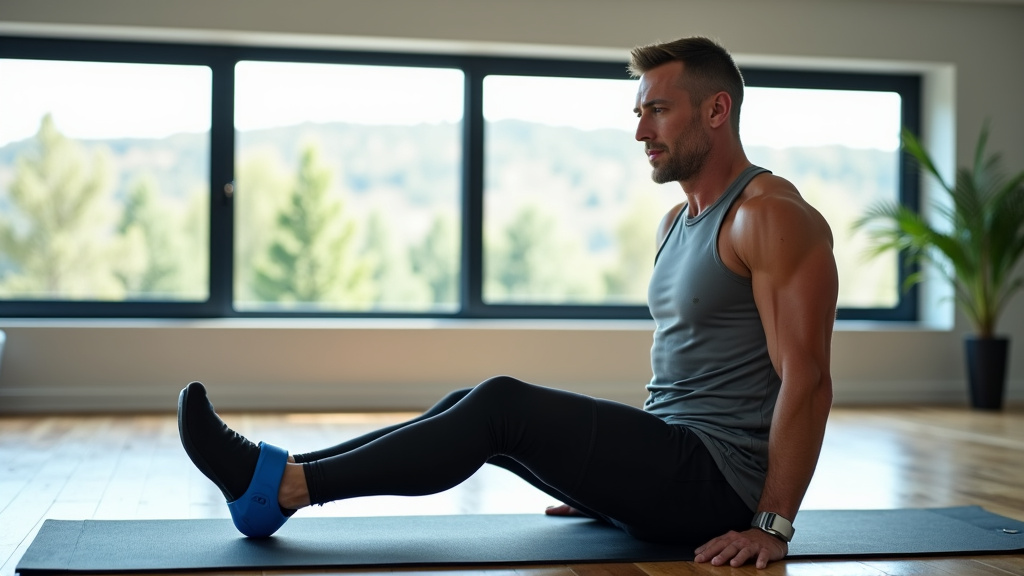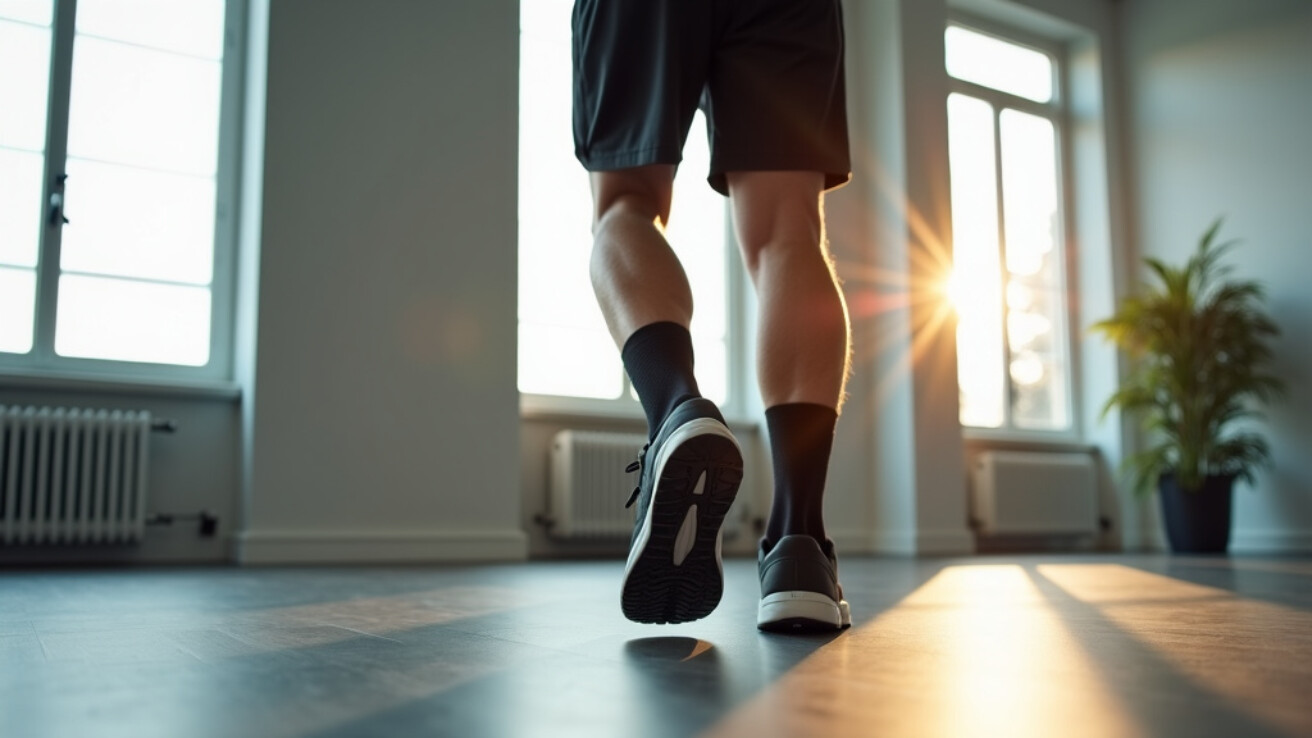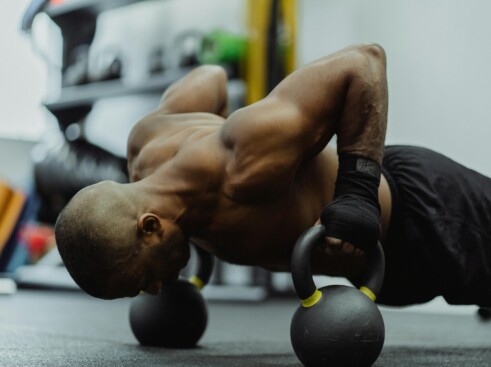When you strap on ankle weights, you’re adding more than just resistance to your workout – you’re engaging in a scientifically-proven method of strength training. These effective devices create a powerful chain reaction in your body’s muscular system.
According to research published in PLOS ONE, ankle weights significantly increase activation across multiple muscle groups, including the biceps femoris, gluteus maximus, and tibialis anterior. This enhanced muscle engagement extends beyond your lower body, creating a comprehensive strengthening effect.
The science behind this is clear: the added resistance forces your muscles to generate more force with each movement. Your body responds by recruiting additional muscle fibers and increasing neural activation patterns, leading to improved strength and muscular endurance.
Muscle Activation and Resistance Benefits
The resistance provided by ankle weights creates progressive overload – a fundamental principle for building strength. Your muscles work harder to overcome both gravity and the additional weight.
Studies have shown that even modest weights of 1-2 pounds can increase muscle activation by forcing your legs to generate more force with each step or movement. This increased effort translates into greater calorie burn and improved muscle tone over time.
Research has demonstrated that ankle weights can help improve bone density through increased mechanical loading. The extra weight stimulates bone growth and helps prevent bone loss, making them particularly valuable for older adults concerned about osteoporosis.
Metabolic and Cardiovascular Impact
The benefits extend beyond muscle strengthening. Research shows that incorporating ankle weights into your routine can boost your metabolism during and after exercise through excess post-exercise oxygen consumption (EPOC).
Your cardiovascular system also receives an enhanced workout. When wearing ankle weights, your heart works harder to pump blood to the challenged muscles, potentially improving cardiovascular endurance when used appropriately.
However, proper form and gradual progression are essential. Scientists recommend starting with lighter weights and slowly increasing the load as your strength improves to prevent strain on joints and connective tissues.
| Study | Weight Used | Outcome | Notes |
|---|---|---|---|
| 2016 Study (Older Adults) | 0.5%, 1%, 1.5% of body mass | Improved knee joint repositioning | 1% group performed best |
| Stroke Rehabilitation Study | 3-5% of body weight | Improved balance | Used on stroke-affected side |
| 2016 Malaysian Study | 0.5 kg (1.1 pounds) | Reduced waist circumference and body fat | 3 times per week for 20 minutes |
| Walking Study (Healthy Adults) | 1-2% of body weight | Enhanced walking mechanics | Effective for adults without symptoms |
Proper Usage and Safety Considerations

Using ankle weights effectively requires careful attention to proper form and safety guidelines. According to research from medical experts, the ideal weight should be between 1-2% of your body weight to minimize injury risk while maximizing benefits.
Start with lighter weights – typically 1-2 pounds for beginners. Your body needs time to adapt to the additional resistance, and rushing this process can lead to strain or injury.
For optimal safety, limit your initial ankle weight sessions to 5-10 minutes. Gradually increase duration as your strength and endurance improve, but avoid wearing them for extended periods.
Essential Safety Guidelines
Proper form is crucial when exercising with ankle weights. Keep your movements controlled and deliberate, avoiding jerking or swinging motions that could stress your joints.
Listen carefully to your body’s signals during workouts. If you experience any sharp pain, particularly in your ankles, knees, or hips, stop immediately and consult a healthcare professional.
Never use ankle weights during high-impact activities like running or jumping. These activities already place significant stress on your joints, and adding weights can increase your risk of injury.
Recommended Usage Patterns
Begin with simple, low-impact exercises to build foundational strength. Focus on controlled leg lifts, knee raises, and other movements that don’t strain your joints.
| Exercise | Muscles Worked | Benefits |
|---|---|---|
| Bicycle Kicks | Quads, hamstrings, glutes, hip flexors, abs, obliques | Improves core strength and muscle endurance |
| High Knees | Legs, core | Boosts cardiovascular fitness and burns calories |
| Donkey Kicks | Glutes, hamstrings, lower back | Enhances glute strength and lower body stability |
| Leg Raises | Lower abs | Strengthens core muscles |
| Side Leg Raises | Gluteus medius | Builds strong, stable hips |
| Lunges | Glutes, quads, calves, hamstrings | Increases leg strength and endurance |
| Pistol Squats | Quads, glutes | Improves balance and lower body strength |
| Bird Dogs | Core, lower back | Stabilizes core and enhances coordination |
| Fire Hydrants | Outer thighs, glutes | Strengthens lower back and improves flexibility |
| Walking with Ankle Weights | Various leg muscles | Increases cardiovascular and metabolic demand |
Take regular rest days between ankle weight workouts to allow your muscles and joints to recover. Overuse can lead to fatigue and potential injury.
Ensure the weights are properly secured before each workout. They should feel snug but not tight enough to restrict blood flow or cause discomfort.
Effective Exercises Using Ankle Weights
Adding ankle weights to your workout routine can effectively enhance your strength training results, but proper form and careful progression are essential. The Cleveland Clinic recommends starting with lighter weights of 1-3 pounds to maintain proper form and prevent injury.
Leg Lifts for Core Strength
Begin by lying flat on your back with your legs extended and ankle weights secured just above your ankles. Keep your lower back pressed firmly against the floor to protect your spine.
Engage your core muscles by drawing your belly button toward your spine. This step ensures proper targeting of muscle groups and prevents lower back strain.
Lift your legs smoothly until they form approximately a 45-degree angle with the ground. If you’re new to this exercise, try bending your knees slightly to reduce the intensity.
Lower your legs slowly and with control, maintaining core engagement throughout the movement. Keep your feet from touching the ground between repetitions to maintain muscle tension.
Start with 2-3 sets of 10 repetitions, listening to your body and adjusting the intensity as needed. This exercise engages your entire core, from lower abs to hip flexors.
Hip Abductions for Lateral Strength
Lie on your side with your bottom arm supporting your head and top arm stabilizing your body in front. Stack your hips and maintain a straight body line.
Keeping your top leg straight, slowly lift it toward the ceiling, focusing on hip muscle engagement rather than momentum. Lead with your heel to maximize muscle activation.
Hold the raised position briefly at the top, then lower your leg with control. You’ll feel this primarily in your outer hip and thigh muscles.
Maintain proper alignment throughout the exercise – avoid rolling forward or backward as you lift your leg. This ensures effective targeting of intended muscle groups.
Perform 12-15 repetitions on each side, completing 3 sets total. Work both sides equally to maintain muscle balance.
Calf Raises for Lower Leg Development
Stand near a wall or sturdy surface for balance, with feet hip-width apart and ankle weights properly secured. Maintain engaged core and good posture.
Rise up onto the balls of your feet, lifting your heels as high as possible while maintaining balance. Keep the movement smooth and controlled.
Hold the raised position briefly for maximum muscle engagement, then lower your heels back down slowly. Maintain controlled movement throughout.
To increase difficulty, perform this exercise on a step with your heels hanging off the edge. This extends your range of motion and intensifies the stretch.
Complete 3 sets of 15-20 repetitions, taking brief breaks between sets if needed. You should feel an effective burn in your calf muscles.
| Exercise | Primary Benefits | Recommended Sets | Recommended Reps |
|---|---|---|---|
| Leg Lifts | Core strength, hip flexors | 2-3 | 10 |
| Hip Abductions | Lateral strength, outer hip and thigh | 3 | 12-15 |
| Calf Raises | Lower leg development, calf muscles | 3 | 15-20 |
Conclusion: Maximizing the Benefits of Ankle Weights

When used thoughtfully and safely, ankle weights serve as an effective tool for enhancing your fitness routine. Research demonstrates their ability to increase muscle activation, improve cardiovascular health, and build overall strength when properly incorporated into workouts.
The key to success lies in starting conservatively with lighter weights, typically 1-2 pounds per ankle as recommended by the American Council on Exercise. This measured approach allows your body to adapt while minimizing the risk of strain or injury.
Ankle weights offer remarkable versatility in enhancing various exercises. From leg raises and glute bridges to core-strengthening movements, these practical tools add meaningful resistance to both strength training and rehabilitation workouts.
Safety remains paramount – proper form, gradual progression, and attention to your body’s signals help prevent injury. Remember to give your muscles adequate rest between weighted sessions and avoid wearing ankle weights for extended periods or during high-impact activities.
By following these evidence-based guidelines and incorporating ankle weights strategically into your fitness regimen, you can effectively maximize their benefits while maintaining proper form and safety. Your path to increased strength and endurance starts with mindful, consistent practice.







